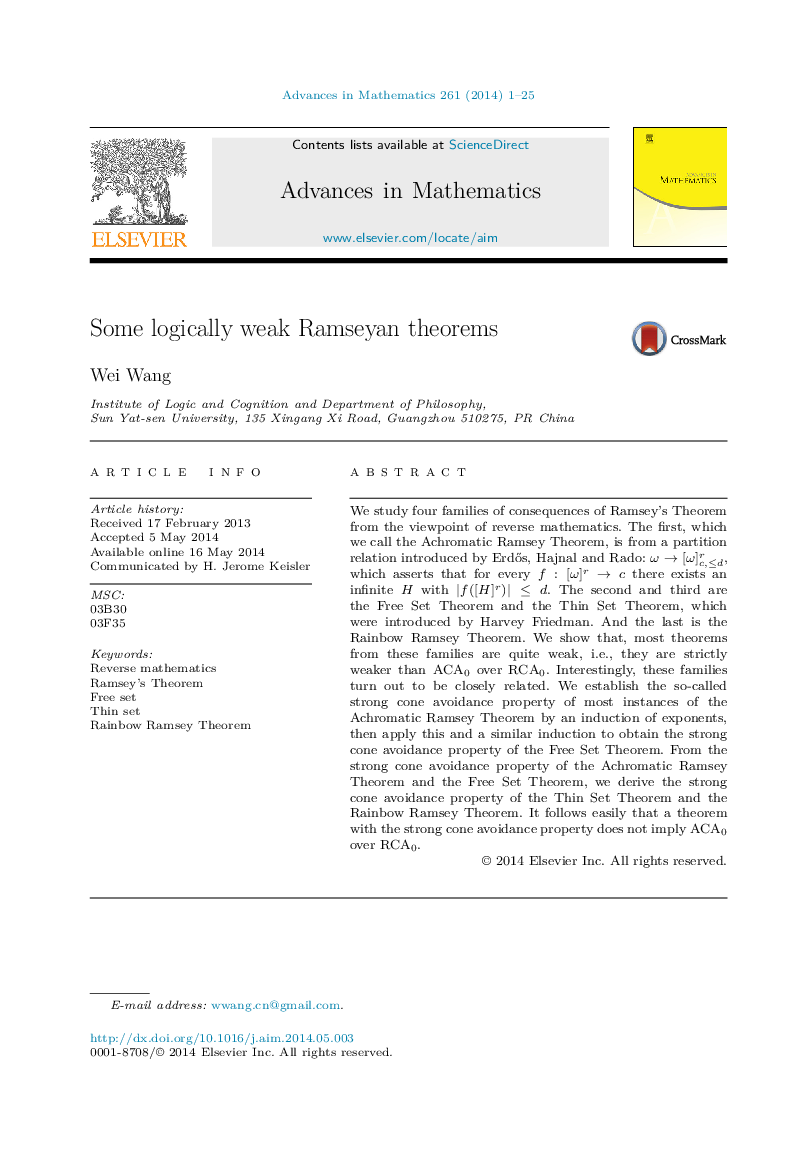| Article ID | Journal | Published Year | Pages | File Type |
|---|---|---|---|---|
| 4665734 | Advances in Mathematics | 2014 | 25 Pages |
We study four families of consequences of Ramsey's Theorem from the viewpoint of reverse mathematics. The first, which we call the Achromatic Ramsey Theorem, is from a partition relation introduced by Erdős, Hajnal and Rado: ω→[ω]c,≤dr, which asserts that for every f:[ω]r→cf:[ω]r→c there exists an infinite H with |f([H]r)|≤d|f([H]r)|≤d. The second and third are the Free Set Theorem and the Thin Set Theorem, which were introduced by Harvey Friedman. And the last is the Rainbow Ramsey Theorem. We show that, most theorems from these families are quite weak, i.e., they are strictly weaker than ACA0ACA0 over RCA0RCA0. Interestingly, these families turn out to be closely related. We establish the so-called strong cone avoidance property of most instances of the Achromatic Ramsey Theorem by an induction of exponents, then apply this and a similar induction to obtain the strong cone avoidance property of the Free Set Theorem. From the strong cone avoidance property of the Achromatic Ramsey Theorem and the Free Set Theorem, we derive the strong cone avoidance property of the Thin Set Theorem and the Rainbow Ramsey Theorem. It follows easily that a theorem with the strong cone avoidance property does not imply ACA0ACA0 over RCA0RCA0.
